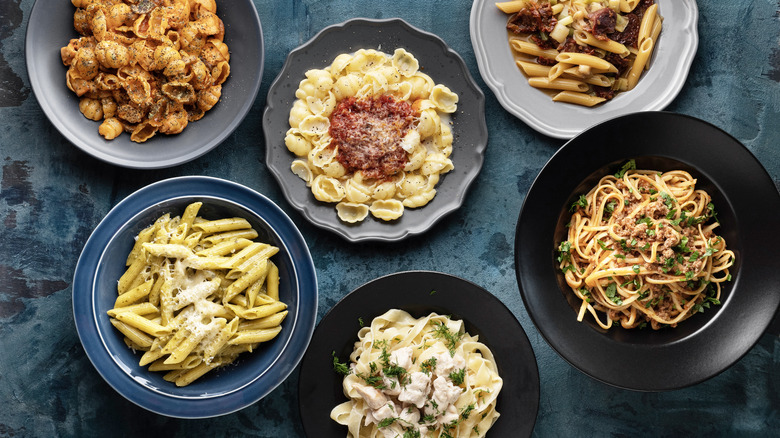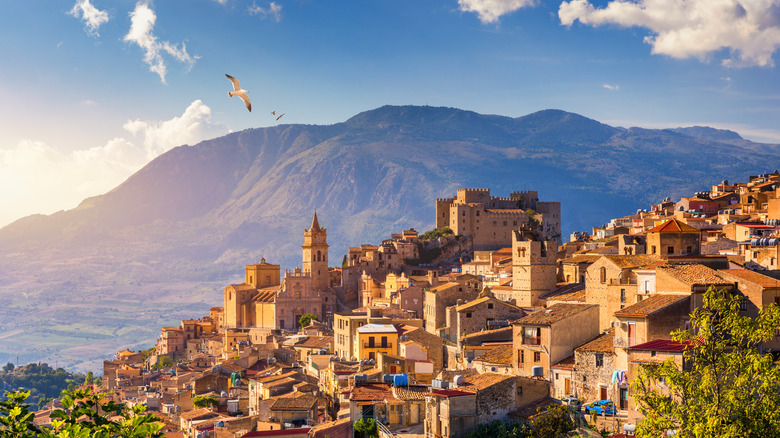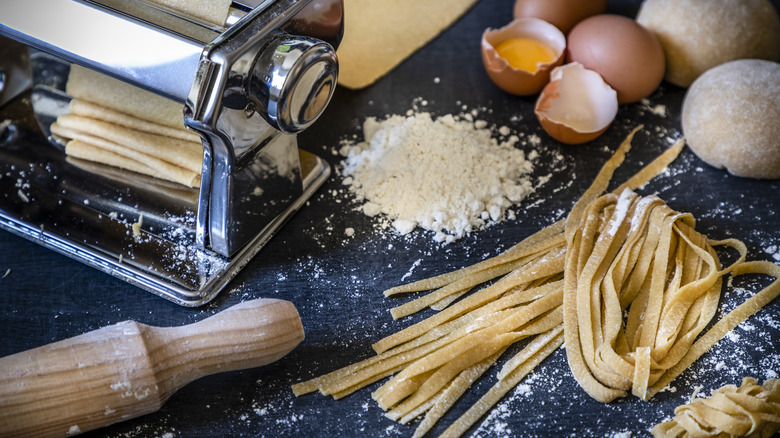Pasta Was Once Considered A Meal For The Wealthy
Pasta comes in all shapes and sizes, and it's beloved across the world in its many iterations. Pasta is a food of comfort and possibility. It can be enjoyed in its simplest form with butter and grated parmesan, or you can dress it up in beautiful, rich sauces and proteins. It's a food that just about everyone loves, not just because of its hug-in-a-bowl qualities, but because pasta is as easy to make as it is easy on the wallet. But that wasn't always the case. In fact, there was a time where pasta was almost exclusively for the wealthy.
The history of pasta is a long and murky one. The original dish didn't even involve tomatoes, because they were believed to be satanic due to their red nature (not to mention the colonial fear of nightshades): People believed that a single bite of the fruit could turn your blood into acid. For centuries, pasta dishes were only ever flavored with pork fat and grated hard cheese, which is truly a testament to its fundamental deliciousness.
Pasta's long history
You may be familiar with the legend of Marco Polo bringing pasta to Italy from his travels in China during the late 13th century. The Chinese had been making a noodle-like food since 3000 B.C., but pasta was in Italy long before Marco Polo, most likely brought to Sicily by Arab merchants as a sweet dish known as Itriyya in the 12th century. Even more intriguing, the food appears in Italian history as early as the 4th century B.C., in a depiction found in an Etruscan tomb of people making what appeared to be pasta.
Between the 12th and 17th century, pasta was almost exclusively for wealthy people and very rarely eaten by the poor because of its labor-intensive preparation. Semolina flour requires lots of kneading, and it takes even more time to cut and dry the pasta, leading to high labor costs. But industry and innovation changed all that in the middle of the 17th century, making pasta a dish for the common man.
How pasta has become so widely beloved
By the late 17th and 18th century, pasta became the staple food of Naples. The price of meat and vegetables were on the rise, and suddenly, bread and flour were cheap. All pasta was generally referred to as macaroni until the 20th century. Neapolitans were called 'maccaronaro,' meaning 'macaroni-eaters' (the epithet had been given to Sicilians before then). As durum wheat proliferated in Italy, making it more accessible and affordable, pasta became a favorite among the rich and poor alike. Because of these economic and industrial factors, pasta became the most popular street food in southern Italy, which is why the dish is synonymous with Italian culture.
As for bringing pasta to the United States, you can thank Thomas Jefferson. After he served as ambassador to France in 1789, Jefferson fell in love with the stuff and brought the first pasta machine to America. In 1848, the first industrial pasta factory was opened in Brooklyn, and by the end of the 19th century, there were pasta manufacturers all over the country. Whether it's wheat, veggie, or gluten free, pasta is a dish for everyone, everywhere.


